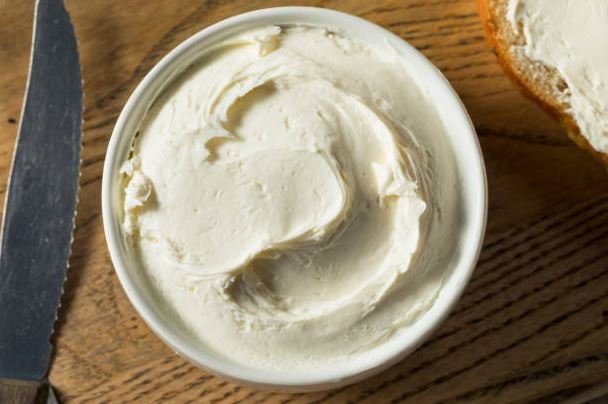Whether homemade or store-bought, stew can provide a comforting and satisfying meal. However, if you find yourself with a leftover stew that you can’t finish in one sitting, you may wonder how long it can be stored in the refrigerator before it goes bad.
In this blog post, we will explore the shelf life of unopened stew, how determine if it is still safe to consume, and provide tips for extending its freshness.
How Long Does Stew Last in the Refrigerator if Unopened?
Stews can last for a considerable amount of time in the refrigerator when properly stored. Unopened stew can generally be safely stored in the fridge for about 3 to 4 days. This duration may vary slightly depending on the ingredients used and the specific recipe.
It’s essential to keep the stew refrigerated at or below 40°F (4°C) to prevent the growth of harmful bacteria.
What Is the Shelf Life of Unopened Stew?
The shelf life of unopened stew can be extended if stored under the right conditions. When commercially canned or packaged, stew often has a “best by” or expiration date printed on the label. This date indicates the estimated period the stew is at its highest quality.
However, it’s important to note that this date is not an indicator of safety. Unopened stew can still be safe to consume even after the expiration date has passed as long as it has been stored properly and shows no signs of spoilage.
Can I Consume Unopened Stew After the Expiration Date?
While it is generally safe to consume unopened stew after the expiration date, it’s crucial to exercise caution and inspect the stew before consuming it. The expiration date estimates when the stew is expected to maintain its best quality. However, the actual safety and edibility of the stew depend on various factors, such as how it was stored and handled.
How Many Days Can Unopened Stew Be Stored in the Fridge?
Unopened stew can typically be stored in the refrigerator for 3 to 4 days. This timeframe allows for optimal freshness and taste. However, it’s essential to consider the storage conditions and the ingredients used in the stew.
If the stew contains perishable ingredients, such as meat or dairy products, it may spoil more quickly and should be consumed within a shorter time frame.
Determining If Unopened Stew Is Still Safe to Consume
To determine if the unopened stew is still safe to consume, it’s crucial to rely on your senses and conduct a visual and olfactory inspection. Here are some signs that indicate unopened stew may have gone bad:
- Foul Odor: It is likely spoiled if the stew smells unpleasant or rancid. Trust your sense of smell, as it is often an accurate indicator of spoilage.
- Mold Growth: Visible mold growth on the surface of the stew is a clear sign of spoilage. Mold can produce harmful toxins, and consuming moldy stew can lead to foodborne illnesses.
- Abnormal Texture or Appearance: Inspect the stew for any changes in texture or appearance. If the stew appears slimy, discolored or has an off-putting texture, it’s best to discard it.
- Bubbling or Fermentation: If the stew exhibits signs of bubbling, excessive gas production, or fermentation, it may have undergone spoilage due to bacterial activity.
It’s important to note that unopened stew may still appear visually fine and have no foul odor but could still be unsafe to consume. Always prioritize safety when in doubt; if any of the above signs are present, it’s best to err on caution and discard the stew.
Tips for Extending the Shelf Life of Unopened Stew
To maximize the shelf life of unopened stew and ensure its freshness, consider the following tips:
- Proper Storage: Store unopened stew in a cool, dark place like a pantry or cupboard. Keep it away from direct sunlight and heat sources, which can accelerate spoilage.
- Temperature Control: When storing stew in the refrigerator, maintain a temperature of 40°F (4°C) or below. This temperature range inhibits bacterial growth and helps preserve the quality of the stew.
- Use Airtight Containers: If you transfer leftover stew to a different container, ensure it is stored in an airtight container. Airtight containers help prevent moisture and odors from permeating the stew, which can contribute to spoilage.
- Label and Date: If you decant stew into separate containers, remember to label and date them. This practice ensures you can keep track of the stew’s freshness and consume the oldest portions first.
- Freeze for Long-Term Storage: Consider freezing the stew if you anticipate not consuming it within a few days. Freezing can significantly extend the shelf life of stew. Transfer the stew to freezer-safe containers or resealable bags, leaving some headspace for expansion. Stew can last several months when properly stored in the freezer at 0°F (-18°C) or below.
Can I Freeze Unopened Stew to Extend Its Shelf Life?
You can freeze unopened stew to extend its shelf life. Transfer the stew to freezer-safe containers or resealable bags, leaving some headspace for expansion. Stew can last for several months when properly stored in the freezer at 0°F (-18°C) or below.
How Can I Thaw Frozen Stew?
To thaw frozen stew, place it in the refrigerator overnight or use the defrost setting on your microwave. Once thawed, heat the stew thoroughly before consuming.
Is It Safe to Consume Unopened Stew if It’s Past the Expiration Date?
While the expiration date estimates the stew’s quality, it doesn’t necessarily mean it is unsafe to consume. Conduct a visual and olfactory inspection to ensure the stew shows no signs of spoilage. It should still be safe to consume if it appears and smells normal.
Conclusion
Unopened stew can be stored in the refrigerator for about 3 to 4 days. It’s important to consider the ingredients used and the storage conditions to ensure its freshness and safety. By inspecting the stew for signs of spoilage and following proper storage guidelines, you can make the most out of your stew and avoid food waste.
Remember to trust your senses and prioritize safety when determining whether unopened stew is still suitable for consumption.



















